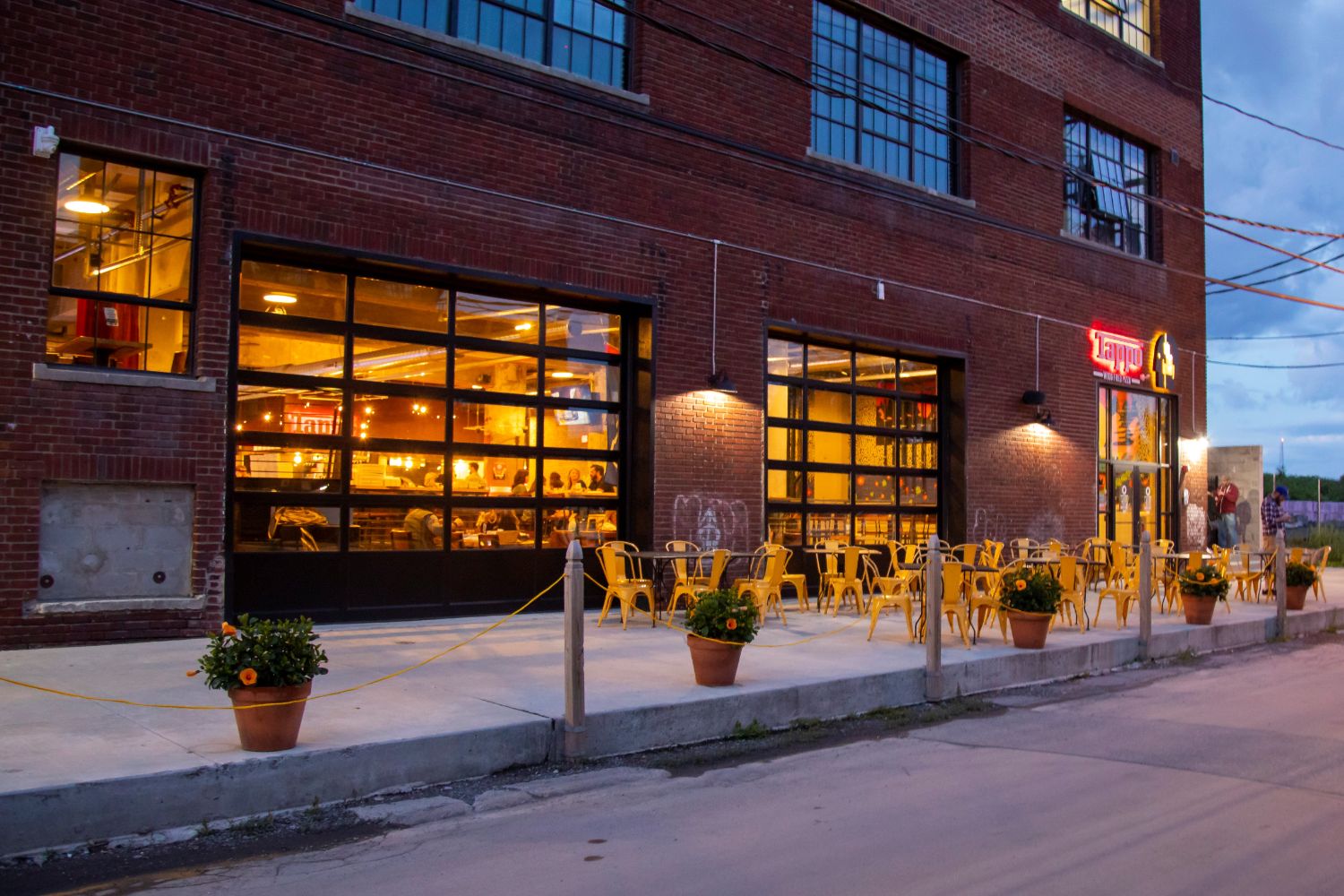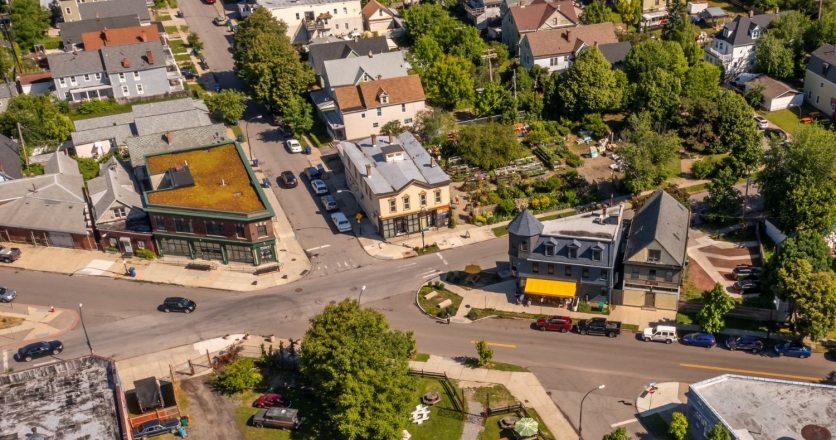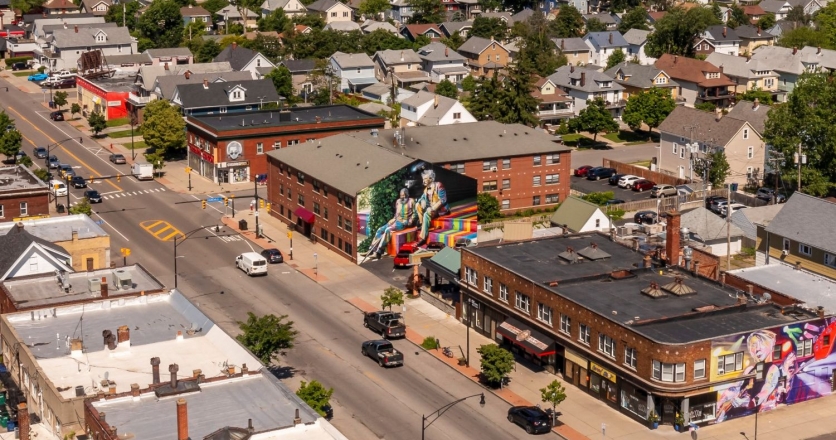Streets Ahead
As in many cities, Buffalo’s historically planned design has been annihilated by modern development and challenges that early leaders couldn’t have anticipated. This dissection of the city has resulted in a fractured map of food destinations, with ambitious restaurateurs opening their doors wherever it makes financial sense.
The result is a handful of culinary enclaves stuffed into seemingly odd locations. The Five Points neighborhood is mostly residential, but it’s also home to a James Beard Award semifinalist. The Chandler Street neighborhood looks desolate and discarded, except for a culinary incubator with a nationally recognized fusion restaurant.
Because Buffalo’s food scene is so disjointed, it helps to have a sense of where to go and what to expect when you get there. Here are four standout neighborhoods worth investigating.
CHANDLER STREET (NORTH BUFFALO)
Chandler Street in the North Buffalo district of Black Rock isn’t the most aesthetically pleasing foodie destination, but it has become a stronghold of local culinary power. The ongoing transformation of Chandler Street into a destination has been thanks to local developer Rocco Termini, who has invested tens of millions of dollars into renovating the street’s old factories.
Anchored by high-profile tenants like the Indian-Texas fusion takeout spot Southern Junction and the upscale New American restaurant Waxlight Bar a Vin, a new-ish culinary incubator near Military Road is the beating heart of this emerging food scene. On Saturdays, a pop-up market event has some food vendors opening their doors to the public for walk-up service and others setting up shop in the parking lot. Offerings range from mushrooms grown on-site to wild-caught seafood to classic Thai food.
Walking east for five minutes on Chandler Street brings you to the lively Tappo Thin Man Brewery. Featuring Neapolitan-style pizzas, house-brewed beer and regular sets from local DJs, the restaurant is a collaboration between Termini and prolific restaurateur Mike Shatzel that holds down the east side of Chandler Street. Across the street is the Buffalo Cider Hall and the Barrel + Brine Café, which offers celebrations of fermentation: pickles, kombucha, beer and spirits.
Heading one block south on Bridgeman Street and going east two blocks on Grote Street takes you past residential housing to Elmwood Avenue. Around the corner is whole-animal butcher Moriarty Meats and its Café Bar. With its European-influenced fare that highlights classic butchery, the café tends to draw a cosmopolitan crowd.
While Chandler Street and the surrounding Black Rock district has long been known as a working-class area, it’s quickly becoming a draw for in-the-know foodies.
FIVE POINTS (WEST BUFFALO)
Tucked into Buffalo’s West Side is a sleepy little neighborhood known as Five Points. Named after the five-cornered intersection of West Utica, Rhode Island and Brayton streets, this residential neighborhood is fast gaining a reputation as a foodie magnet.
The cultural nexus of this still up-and-coming neighborhood is the Five Points Bakery and Toast Café. Serving espresso drinks, scratch-made baked goods, and various artisanal toasts, the café is often low-key buzzing with Millennials and middle-aged villagers from nearby Elmwood Avenue.
Heading just around the corner on Rhode Island is Las Puertas, a James Beard Award semifinalist serving upscale Mexican-influenced cuisine. Classically trained chef-owner Victor Gonzalez grew up in Mexico and the dishes in this cozy restaurant are often informed by his unique personal story.
Heading northeast on Rhode Island takes you past two more bakery-cafés: Butter Block and Remedy House. Beyond that, Paradise Wines is a retail shop specializing in biodynamic and organic wines. Farther down the street and closer to Richmond Avenue, longstanding upscale restaurant The Left Bank serves American classics—some with a slight French accent.
The formerly nondescript neighborhood is rapidly transforming into a culinary and residential destination. On weekend days, the neighborhood buzzes with brunchers on restaurant patios and shoppers at Urban Roots, a boutique plant store. Once known for very affordable housing, prices have exploded in the past 10 years. Fresh housing facades indicate heavy investments from owners and house flippers. New-model and luxury cars are common sights on these streets.
To some, these developments are a welcome shift away from creeping urban blight. To others, these changes feel homogenizing, co-optive and exclusionary.
GRANT-FERRY (WEST BUFFALO)
It’s a typical weekday and the West Side Bazaar is abuzz with workers on lunch breaks. At one food stand, sushi is delicately assembled while the smells and sounds of Ethiopian cooking emanate from another. A framed New York Times article about the bazaar hanging on the wall lets you know that, yes, this is the place you probably heard about.
Outside, the corner of West Ferry and Grant streets is always active. Heading down West Ferry toward Richmond Avenue is the iconic La Nova Pizzeria—its parking lot a demolition derby of delivery drivers and customers.
A walk north on Grant toward Lafayette Street reveals a smattering of ethnic grocery stores, mostly offering either Southeast Asian and Sub-Saharan African products. Near the corner of Lafayette, about five blocks up from the bazaar, Gather and Game pairs board games and café fare, while Freddy J’s BBQ offers modern soul food. At the corner of Lafayette and Grant, Guercio & Sons is a neighborhood icon and full-service Italian deli.
Development around the neighborhood has been spotty in recent years and the pandemic hasn’t helped. While the neighborhood offers many unique culinary delights, enjoying them is tempered by the sight of shuttered storefronts. An area this culturally rich could be so much more vibrant and perhaps it will be, soon.
HERTEL AVENUE (NORTH BUFFALO)
Formerly home turf for Buffalo’s Italian-American population, the highly walkable neighborhood around Hertel Avenue has been a prime location for younger homebuyers in recent years. Culinary options have been evolving to meet the modern tastes of Millennials, which have become increasingly family-friendly as they age into middle adulthood.
Located near the intersection of Hertel and Parkside avenues, Moor Room is a craft beer destination with strong neighborhood bar vibes. Limited parking in the area makes it a walkable option for many North Buffalo residents, and they can be found here in numbers.
While walking a half-mile east on Hertel takes you to the Lexington Cooperative Market and cult favorite Dash’s Market, walking two blocks west takes you to Mes Que. This soccer-themed bar reverberates with the sounds of world football chants during big matches, and it’s also known for serving good cocktails and American tapas.
Walking a few more blocks to the west brings you to the iconic Ristorante Lombardo, an upscale Italian-American restaurant celebrating the past and present. Across the street is The Little Club, a trendy, high-end wine bar that also features cheeses, charcuterie and refined small plates. Another block west, the goth-themed The Merry Shelly with its absinthe fountains is a perfect nightcap destination.
It’s common to see young parents pushing strollers down Hertel and families walking to restaurants. While the family-friendly nature of a neighborhood might translate to less-adventurous food and drink offerings, Hertel Avenue offers a wide range of sophisticated and alternative possibilities.
There’s a lot to unpack in Buffalo’s non-cohesive food scene. The city may be on the culinary map for chicken wings, but several emerging culinary neighborhoods are being recognized for their diverse and contemporary options. Enjoying these foodie neighborhoods takes only a bit of planning and the spirit of exploration.







